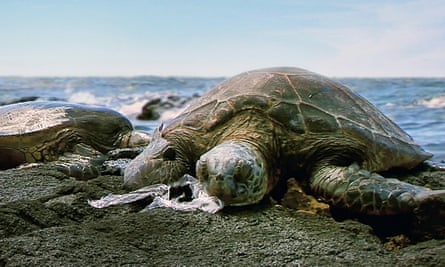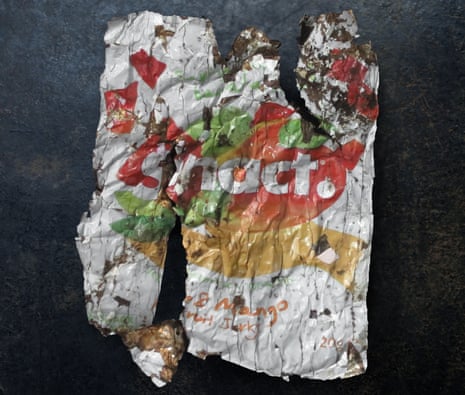Last year Ilana Taub’s startup prevented more than 50 tonnes of apples, bananas, blueberries and raspberries from going to landfill by creating snacks from surplus fruit. But, says the co-founder of Snact, they kept being asked the same question: “why were we selling it in plastic packs?”
The London-based company now has a solution. In partnership with Israeli packaging company Tipa, Snact has launched packaging that takes six months to break down in garden compost. “We have found a way of being disposable without causing environmental damage,” says Taub.
Each year at least 8m tonnes (pdf) of plastic end up in the ocean and it is predicted that by 2050 there will be more plastic than fish in the sea. “It’s crazy, when you think how much plastic has invaded our lives,” says Taub. “It’s easy and [food] safe, but not feasible in the long run. We need to find alternatives.”
However, more sustainable alternatives have proved controversial. Earlier this year the UN’s chief scientist, Jacqueline McGlade, described biodegradable plastics as “well-intentioned but wrong” since those that end up the oceans do not have the right conditions to break down.

Other plastics, including so-called oxo-degradables (pdf), break down into microplastics, which are also thought to be highly damaging if they find their way into the ocean.
Now a new generation of plastic makers is working to tackle the global plastic waste crisis head on by developing home-compostable plastics.
As well as Snact wrappers, Tipa produces zip-up bags, sold in the US, which take as little as three months to fully break down, and packaging for everything from T-shirts to Dutch carrots. The company is currently undergoing trials with several UK manufacturers.
A major obstacle to the uptake of home-compostable plastics, however, is cost. “It is more expensive than traditional plastic, so tends to be used where it fits into the ethos of the product – deluxe, green or organic,” says Andy Sweetman, marketing manager at Futamura UK, which produces home-compostable NatureFlex.
There is also the issue of consumer understanding and uptake. Snact’s packaging leaves consumers in no doubt with its “this bag is compostable!” messaging, but not all companies make it clear. According to Sweetman, for example, who says Futamura has hundreds of companies using its home-compostable packaging including Nestlé UK for its Quality Street wrappers, not all its customers promote the environmental credentials of their packaging.
Beyond plastics you can stick on your own compost heap (or in industrial composters), manufacturers and scientists are also exploring other alternatives.
US Department of Agriculture (USDA) researchers recently revealed a prototype edible plastic film made from the milk protein casein which guards food against oxygen. USDA research chemical engineer Laetitia Bonnaillie says the result, for which a patent is pending, could potentially contain flavours or micronutrients in the future. Since it was announced in August, three companies have contacted Bonnaillie seeking industry trials. “The companies want to move very fast, [...] although from our experience it usually takes longer,” she says.
Ultimately, tackling packaging waste is about more than just new materials, argues Rob Opsomer, who leads the Ellen MacArthur Foundation’s new plastics economy drive. “Shifting towards new materials that enable recycling or composting is one of several strategies to redesign packaging applications,” says Opsomer.
Even if something is biodegradable, however, we don’t want to encourage littering or mismanagement, says Jenna Jambeck, associate professor of environmental engineering at the University of Georgia: “We want all our materials kept in a circular management system to recapture the valuable resources in them.”

Comments (…)
Sign in or create your Guardian account to join the discussion